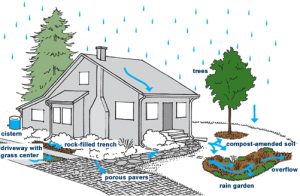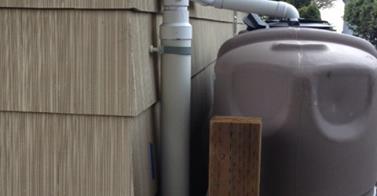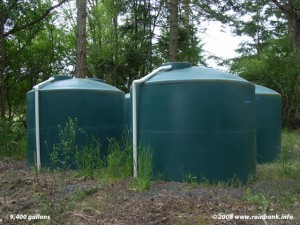 The City of Seattle, through Seattle Public Utilities, has been offering incentives in the way of rebates for rainwater collection since 2010. The Rain Wise program promotes rain gardens and cistern use for landscaping to offset storm water runoff. While not available in all areas of Seattle, it is growing in popularity in the Ballard and other areas.This is the first incentive program for rainwater harvesting in Seattle with hopes of expanding its area. Diverting rainwater from the roof to a rain garden or cisterns for irrigation helps reduce demand on the city’s sewer system, which finds itself increasingly overwhelmed, resulting in sewage spills in the Puget Sound. Read more from Sustainable Seattle.
The City of Seattle, through Seattle Public Utilities, has been offering incentives in the way of rebates for rainwater collection since 2010. The Rain Wise program promotes rain gardens and cistern use for landscaping to offset storm water runoff. While not available in all areas of Seattle, it is growing in popularity in the Ballard and other areas.This is the first incentive program for rainwater harvesting in Seattle with hopes of expanding its area. Diverting rainwater from the roof to a rain garden or cisterns for irrigation helps reduce demand on the city’s sewer system, which finds itself increasingly overwhelmed, resulting in sewage spills in the Puget Sound. Read more from Sustainable Seattle.
Other cities in the US are finding this to be a good solution to the increasing demands on their sewer systems and water supplies as well. With the droughts that are being experienced in Texas, the city of San Marcos is offering rebates to homeowners up to $5,000 for installing rainwater catchment systems and commercial buildings up to $2,000.
As demands increase on our centralized water and sewage systems, rainwater collection incentives will become more popular throughout Seattle and other cities in the US.


 This is Part 4 in the series “How to Build a Rainwater Collection System”. Click to see parts
This is Part 4 in the series “How to Build a Rainwater Collection System”. Click to see parts  Sizes vary from a simple 50 gallon rain barrel all the way up to 10,000 gallons. All should have a UV protection warranty for at least 8 years. Dark colors are recommended to alleviate light penetration which can cause algae growth. Multiple tanks can be manifolded together to achieve the volume of storage needed. Keep in mind that plumbing should be under ground for frost protection.
Sizes vary from a simple 50 gallon rain barrel all the way up to 10,000 gallons. All should have a UV protection warranty for at least 8 years. Dark colors are recommended to alleviate light penetration which can cause algae growth. Multiple tanks can be manifolded together to achieve the volume of storage needed. Keep in mind that plumbing should be under ground for frost protection. Rural residents are finding that rainwater collection can be a viable alternative to well water. Since rainwater is generally cleaner than surface water and well water, a rainwater system that is properly designed and installed can supply a household with good, clean water for potable use.
Rural residents are finding that rainwater collection can be a viable alternative to well water. Since rainwater is generally cleaner than surface water and well water, a rainwater system that is properly designed and installed can supply a household with good, clean water for potable use. RainBank will be happy to calculate your potential yield of available rainwater from your roof. Contact us using the form below.
RainBank will be happy to calculate your potential yield of available rainwater from your roof. Contact us using the form below.